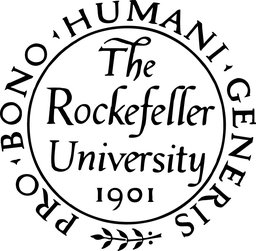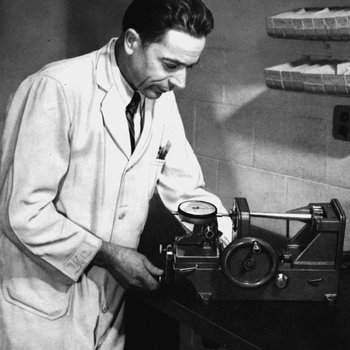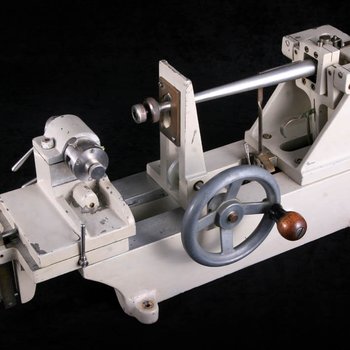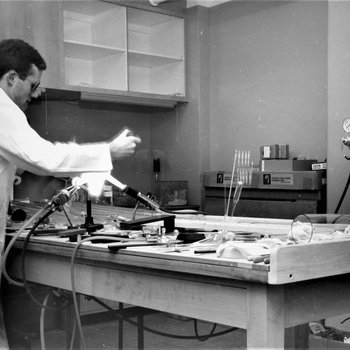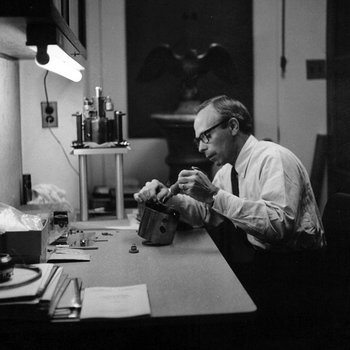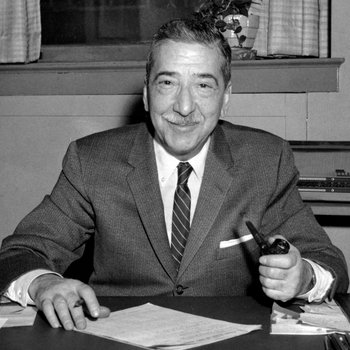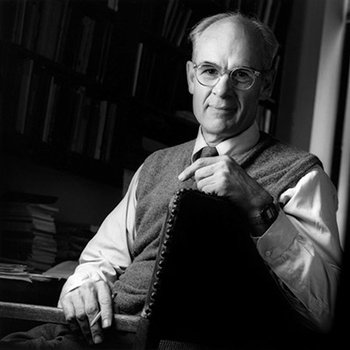Tools for Discovery
Many scientific advances at Rockefeller have gone hand in hand with the development of new instruments. Scientists have invented their own devices to measure nerve impulses or separate and purify chemical compounds. Today instruments are usually mass-produced by commercial manufacturers. But for much of the century that was not the case, and Rockefeller was unique in keeping skilled craftsmen on staff in the instrument, electronics, and glass-blower's shops. Work in these shops ranged from routine repairs on existing instruments to producing one-of-a-kind centrifuges and other inventions designed to meet specific laboratory needs.
The pump developed by Alexis Carrel and pioneering aviator Charles Lindbergh for perfusing organs with oxygenated blood is one example. This complex apparatus was a step toward making organ transplants possible.
In the 1950s Rockefeller's instrument makers developed a new version of a device called a microtome. This instrument slices specimens into thin sections so that researchers can look at them with a microscope.
